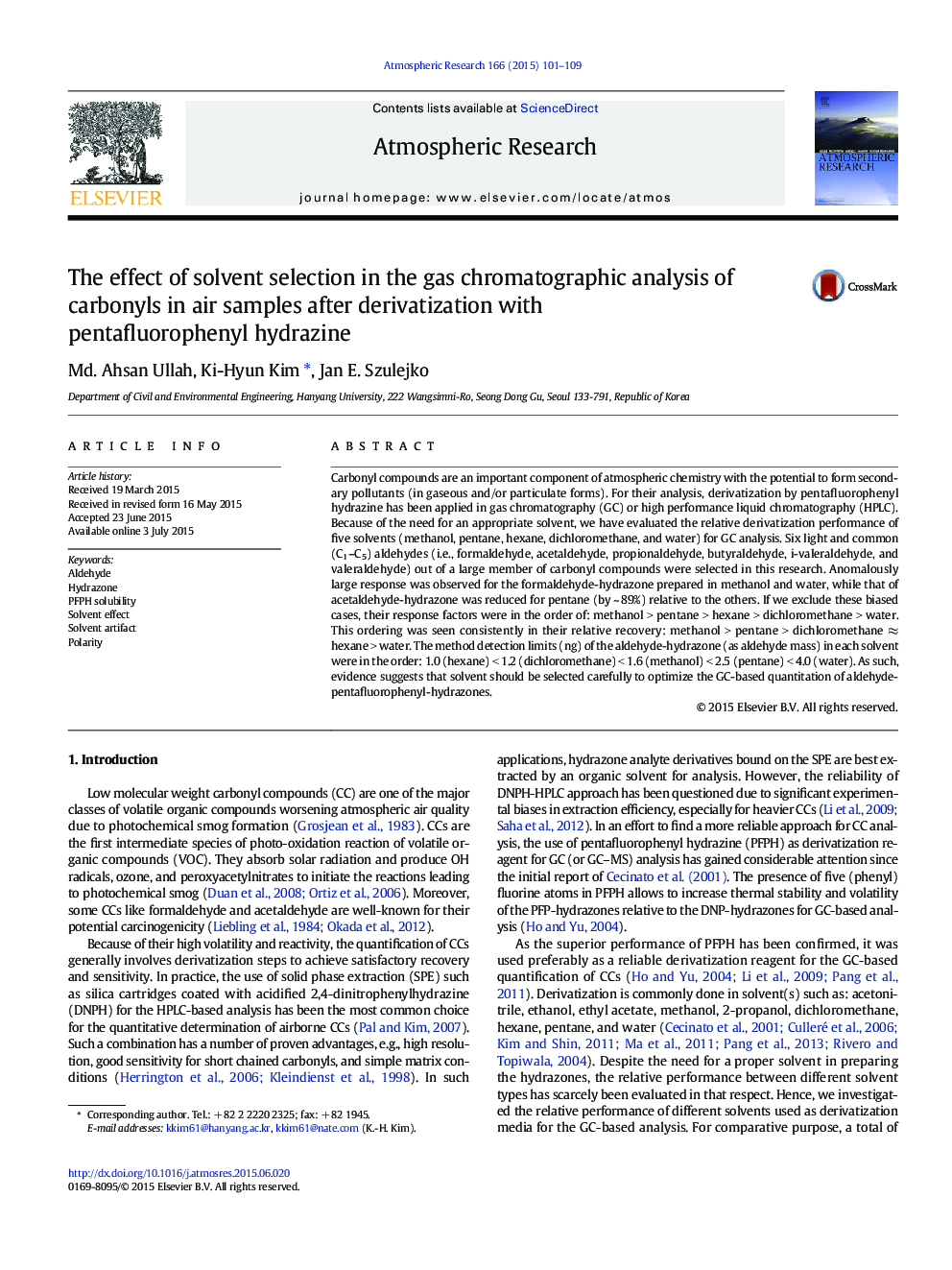| کد مقاله | کد نشریه | سال انتشار | مقاله انگلیسی | نسخه تمام متن |
|---|---|---|---|---|
| 4449731 | 1620510 | 2015 | 9 صفحه PDF | دانلود رایگان |
• Quantification of CCs generally involves derivatization steps due to high volatility and reactivity.
• GC analysis with pentafluorophenyl hydrazone (PFPH) is considered an alternative method.
• CC-PFPH derivatization is explored using five solvents in relation to their efficacy of calibration.
• To optimize the quantitation of CC-PFPH, solvent properties should be carefully considered.
Carbonyl compounds are an important component of atmospheric chemistry with the potential to form secondary pollutants (in gaseous and/or particulate forms). For their analysis, derivatization by pentafluorophenyl hydrazine has been applied in gas chromatography (GC) or high performance liquid chromatography (HPLC). Because of the need for an appropriate solvent, we have evaluated the relative derivatization performance of five solvents (methanol, pentane, hexane, dichloromethane, and water) for GC analysis. Six light and common (C1–C5) aldehydes (i.e., formaldehyde, acetaldehyde, propionaldehyde, butyraldehyde, i-valeraldehyde, and valeraldehyde) out of a large member of carbonyl compounds were selected in this research. Anomalously large response was observed for the formaldehyde-hydrazone prepared in methanol and water, while that of acetaldehyde-hydrazone was reduced for pentane (by ~ 89%) relative to the others. If we exclude these biased cases, their response factors were in the order of: methanol > pentane > hexane > dichloromethane > water. This ordering was seen consistently in their relative recovery: methanol > pentane > dichloromethane ≈ hexane > water. The method detection limits (ng) of the aldehyde-hydrazone (as aldehyde mass) in each solvent were in the order: 1.0 (hexane) < 1.2 (dichloromethane) < 1.6 (methanol) < 2.5 (pentane) < 4.0 (water). As such, evidence suggests that solvent should be selected carefully to optimize the GC-based quantitation of aldehyde-pentafluorophenyl-hydrazones.
Journal: Atmospheric Research - Volume 166, 1 December 2015, Pages 101–109
